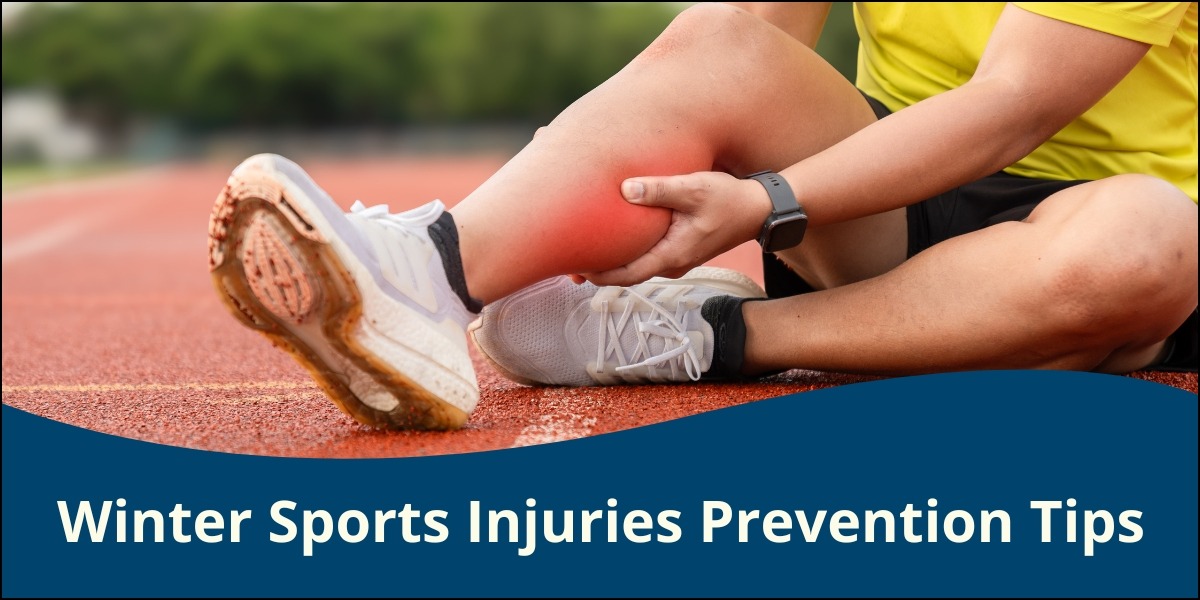The chill in the air and the first dusting of snow signal the start of an exciting season for winter sports enthusiasts. Whether you’re a seasoned skier, an ice hockey player, or someone enjoying a casual day sledding, the thrill of winter activities is unmatched. However, this excitement often comes with a heightened risk of orthopedic injuries. From minor sprains to more serious fractures, being prepared is your best defense.
Understanding how to prevent these common winter sports injuries ensures you can enjoy the season to its fullest, without a trip to the emergency room.
Common Winter Sports Injuries
Before hitting the slopes or the rink, it’s helpful to know what you’re up against. The most frequent injuries seen by orthopedic doctors during winter include:
-
Knee Ligament Injuries: The infamous ACL (anterior cruciate ligament) and MCL (medial collateral ligament) tears are prevalent in skiing and snowboarding due to twisting falls and sudden changes in direction.
-
Shoulder Dislocations and Fractures: A fall on an outstretched arm while skiing, snowboarding, or ice skating can easily dislocate the shoulder or cause a fracture to the collarbone.
-
Wrist and Ankle Sprains/Fractures: Snowboarders often fall on their hands, leading to “snowboarder’s fracture” in the wrist. Icy conditions also make ankle twists and sprains very common.
-
Head Injuries (Concussions): Any high-speed fall or collision can result in a head injury, making a helmet non-negotiable.
Proactive Tips for Injury Prevention
Prevention is always better than cure. Follow these essential tips to protect yourself:
-
Get in Shape First: Don’t use the first day of the season as your workout. Condition your body weeks in advance with strength training (focus on legs and core), cardio, and flexibility exercises.
-
Warm-Up and Cool Down: Cold muscles are more prone to injury. Take 10-15 minutes before your activity to do dynamic stretches like leg swings and arm circles. Afterward, cool down with static stretches to aid recovery.
-
Invest in Proper Gear: Your equipment is your first line of defense. Ensure your ski or snowboard bindings are adjusted by a professional. Always wear a certified helmet, and consider protective gear like wrist guards.
-
Master the Basics and Know Your Limits: If you’re a beginner, take lessons from a qualified instructor. Even experienced athletes should avoid trails or maneuvers that are beyond their skill level, especially when fatigued.
-
Stay Hydrated and Take Breaks: High-altitude and cold weather can be deceptively dehydrating. Drink plenty of water and listen to your body. Fatigue significantly increases your risk of injury, so take regular rest breaks.
What to Do If You Get Injured
If you do sustain an injury, remember the R.I.C.E. protocol: Rest the injured area, Ice it to reduce swelling, apply Compression, and Elevate it above the heart. For any severe pain, deformity, or suspected fracture, seek immediate medical attention from an orthopedic specialist.
Dr. Vinil Shinde – Sport Injury Doctor in Kothrud
Seeking expert care for a sports injury in Kothrud. Consult Dr. Vinil Shinde is a trusted orthopedic specialist in Pune. With a focus on sports medicine and arthroscopic surgery, Dr. Vinil Shinde provides diagnosis and treatment for a wide range of winter sports injuries, from ligament tears and fractures to shoulder dislocations.
Frequently Asked Questions (FAQs)
1. What is the most common winter sports injury?
Knee injuries, particularly ACL and MCL sprains or tears, are among the most common injuries, especially in skiing.
2. How can I prevent wrist injuries while snowboarding?
The most effective way to prevent wrist injuries is to wear protective wrist guards and learn proper falling techniques to avoid landing on an outstretched hand.
3. Is it necessary to wear a helmet for winter sports?
Yes, absolutely. A properly fitted, sport-specific helmet is crucial for preventing serious head injuries and concussions during activities like skiing, snowboarding, and ice hockey.
4. What should I do immediately after a sprain?
Follow the R.I.C.E. method: Rest, Ice, Compression, and Elevation. Avoid putting weight on the injury and consult a doctor for a proper diagnosis.
5. Can I ski if I have a previous knee injury?
It is possible, but you must consult with an orthopedic specialist first. They can assess your knee’s stability, recommend a strengthening program, and may advise using a functional knee brace for added support.




